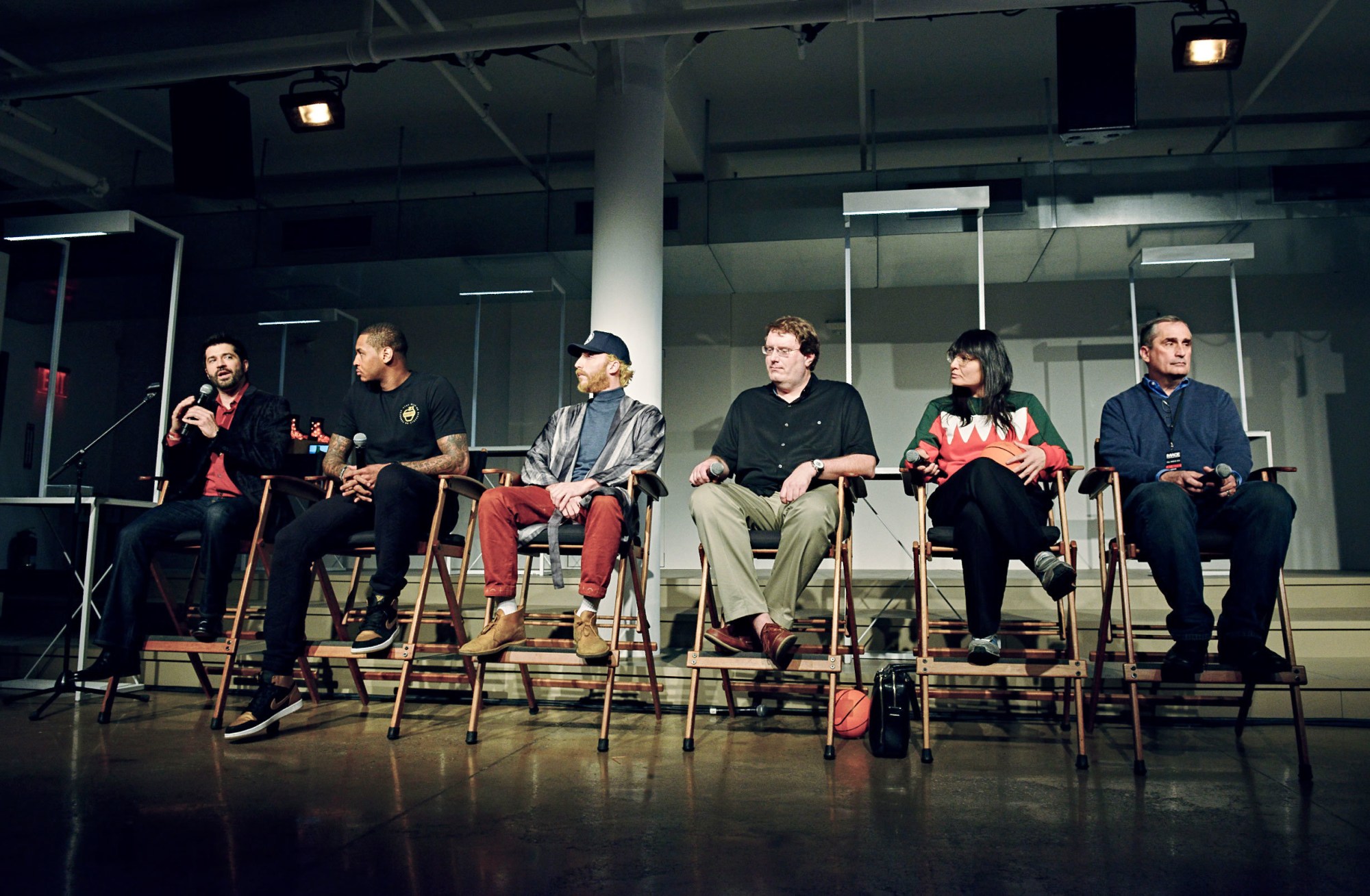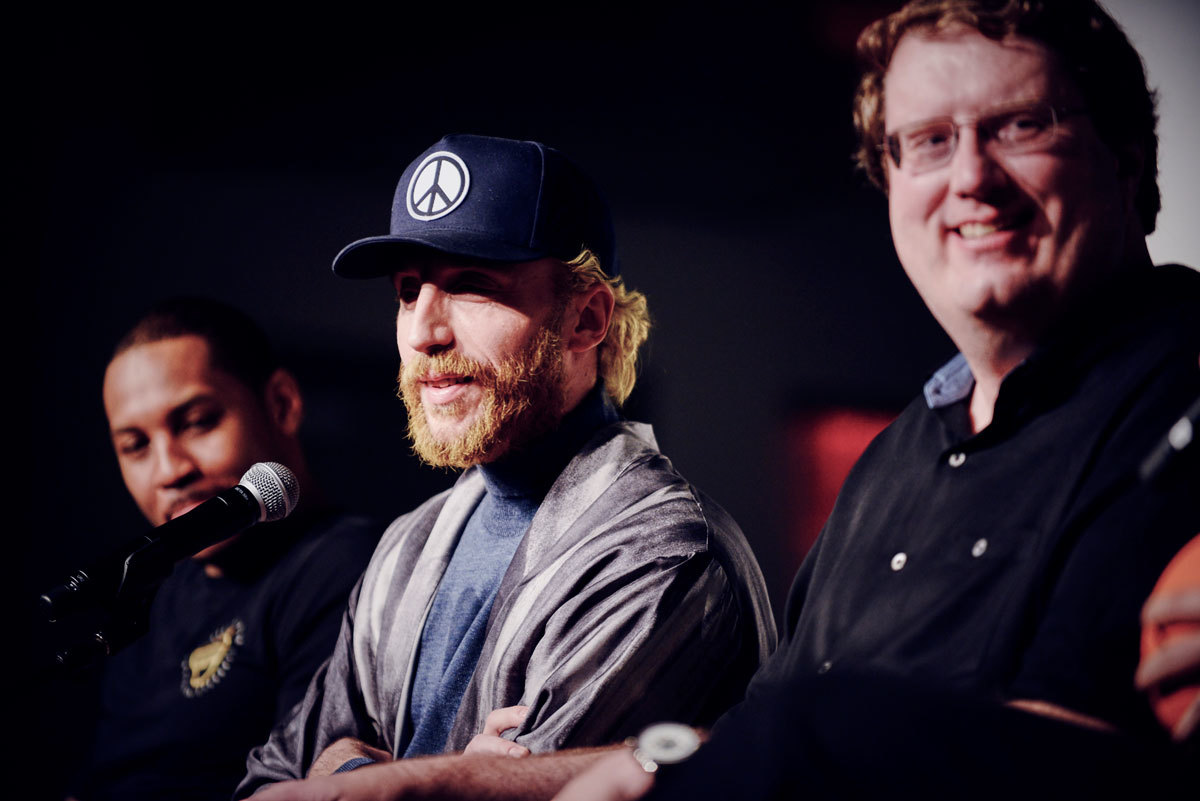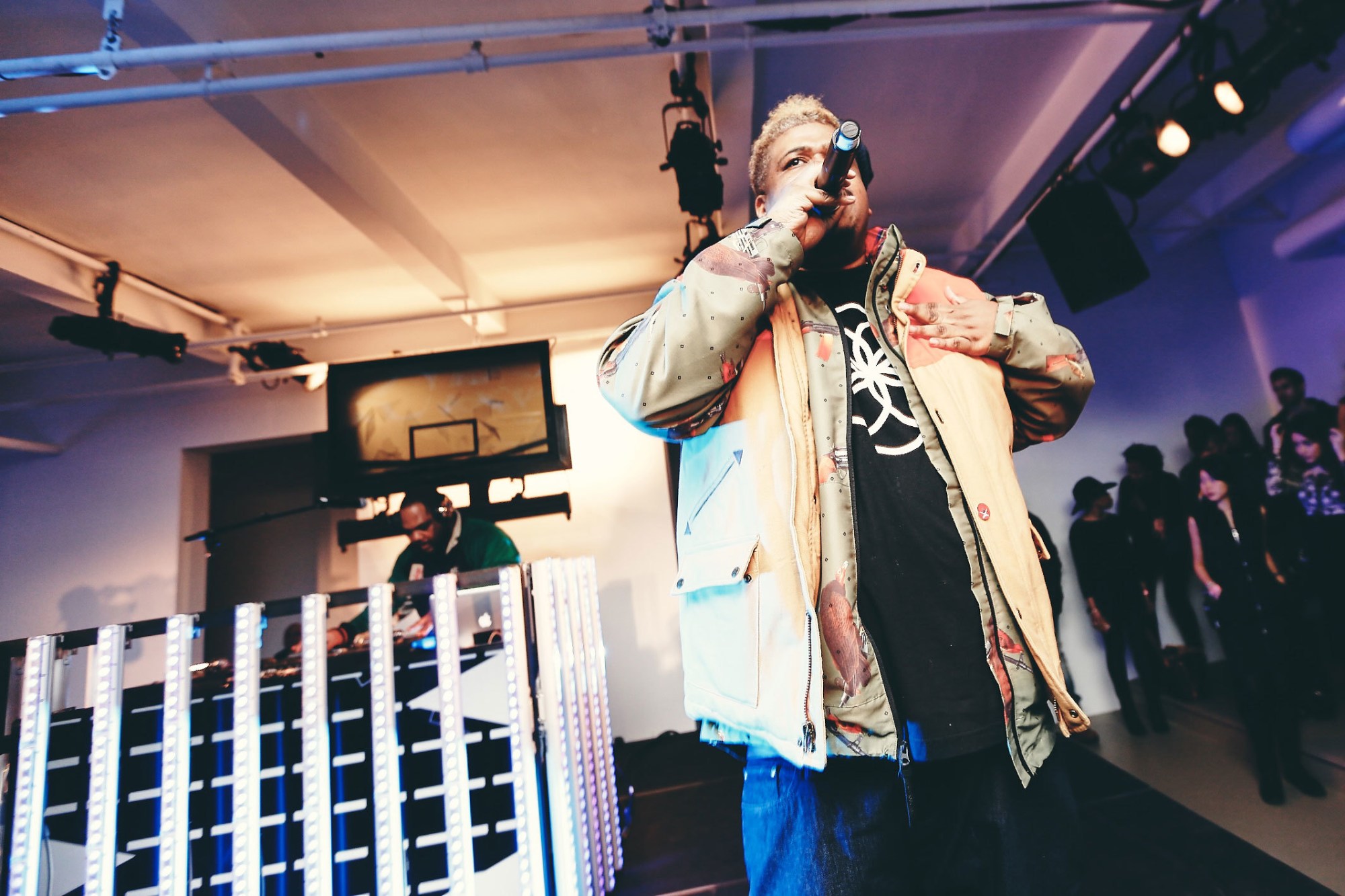On Saturday at Milk Studios in New York, the beginnings of a blizzard swept in Intel CEO, Brian Krzanich; VP and General Manager of Intel’s New Devices Group, Mike Bell; head designer at Pigalle, Stephane Ashpool; CEO and founder of Moondial, Sabine Seymour; and the New York Knicks’ and 8-time NBA All-Star and founder of Melo7 Tech Partners, Carmelo Anthony, to discuss the future of wearable technology for Made Fashion Week’s fall/winter FAST panel. The event, a collaboration between MADE Fashion Week and KATALYST LIVE, was hosted by Brent Blum, lead of Wearable Tech Practice at Accenture, a digital consulting company that has worked with MADE in the past.

This intersection of fashion, sports, and technology was extremely timely, considering that style.com has recently dubbed fall/winter 15 NYFW “NBA FW,” and the past few years have seen a plethora of designers incorporating technology into their runway shows, including Gareth Pugh, Marc Jacobs, Reed Krakoff, and most recently, Adam Selman, who used Hewlett-Packard’s Sprout program to create his fall/winter 2015 collection. But the panel’s focus was on ready-to-wear rather than the theatre of high fashion, as articulated by Krzanich: “What can we do together to turn this [technology] into something that people want to wear? How can we take what we wear everyday and put smartness in it?”
“Wearable technology in sports has been around for a long time…and it’s only getting better and better,” Anthony reminded. “[But the wearable tech] has to look and feel great, or else you won’t wear it.” (NB the rise and fall of the Google Glass, despite FKA Twigs’s endorsement).
Seymour said she was interested in making something “so soft, so simple, so flexible, so seamless that it’s actually integrated into our textile,” to which Bell added, “The technology has to be frictionless, because the person shouldn’t have to learn a new way of doing things…and it has to reflect their personality.”

Ashpool pointed out that though fashion has historically been driven by branding and exclusivity, technological relevance has become an equally important force on the market. To even the aesthetic playing field, “What we [will have] to develop is a cipher,” declared Seymour, playing with a smart basketball that helps to improve shooting technique. “Designers could then actually choose a cipher and upload it into pants that cost twenty bucks or five thousand.”
Krzanich dropped several bottom lines on the conversation: “You can’t have a bunch of engineers sitting in a conference room in [Silicon Valley] coming up with something fashionable…I just don’t think that’s going to happen. The idea is to hand [technology] over to the fashion industry and the people making sportswear and say, ‘See what you can do.’ Just like other things in our lives that get smarter over time, we’re trying to bring smartness to the things we wear every day — that’s really what technology is, it’s that easy.”

The panel followed with a performance by De La Soul, and to the tune of Me Myself and I, the crowd excitedly browsed a showcase of new interactive products — one of which, Pavlok, promises to cure you of your bad habits with a physical shock. The future of wearable tech, if nothing else, is sure to be electrifying.
Catch up with the rest of our fall/winter 15 coverage here.
Credits
Text Hannah Ghorashi
Photography Andrew Boyle for milkmade.com
